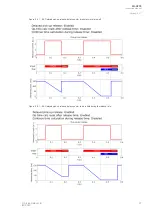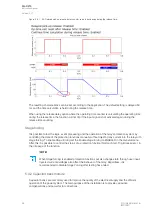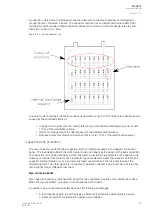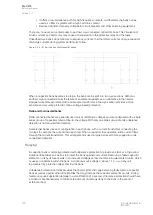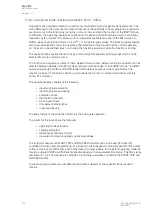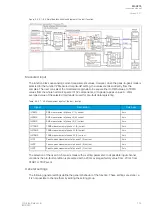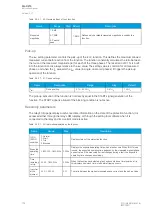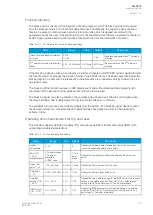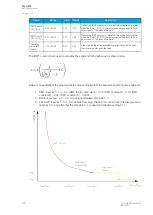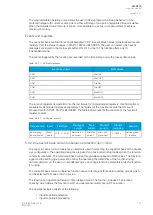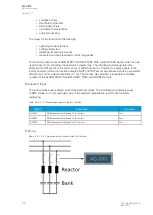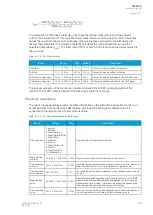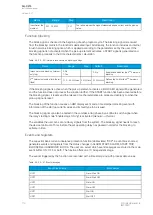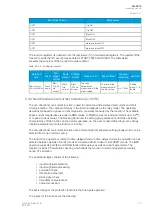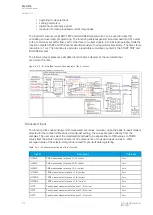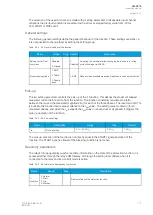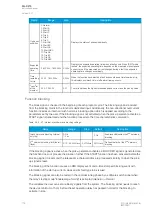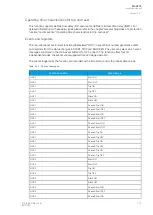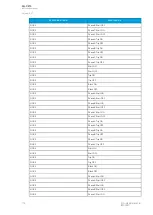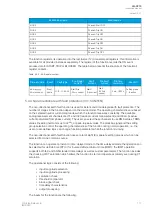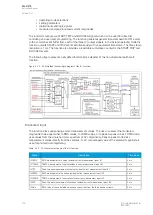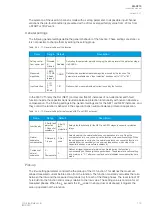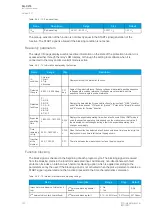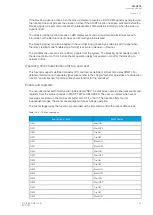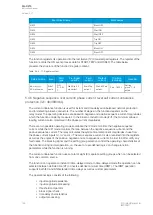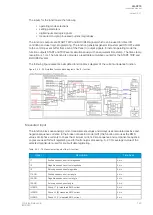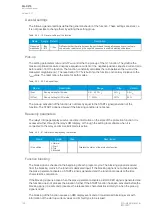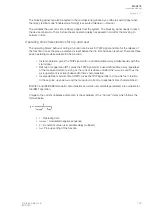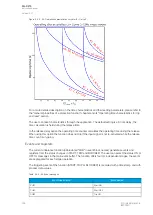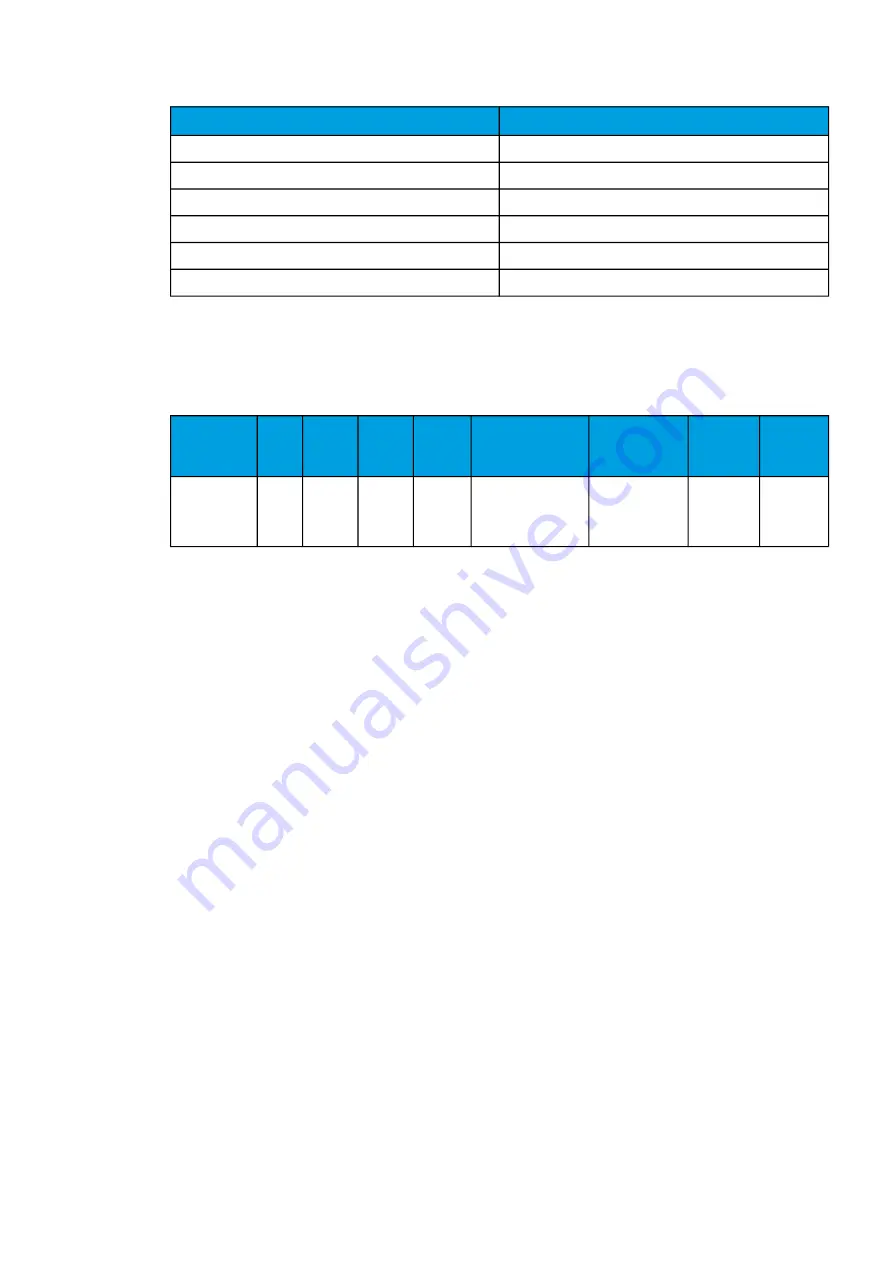
Event block name
Event names
UCP1
Trip ON
UCP1
Trip OFF
UCP1
Block ON
UCP1
Block OFF
UCP1
Harmonic block ON
UCP1
Harmonic block OFF
The function registers its operation into the last twelve (12) time-stamped registers. The register of the
function records the ON event process data for START, TRIP or BLOCKED. The table below
presents the structure of the function's register content.
Table. 5.4.2.2 - 62. Register content.
Date and
time
Event
Pre-
trigger
current
Fault
current
Prefault
current
Meas/AL set
Meas TR/set
Trip time
remaining Used SG
dd.mm.yyyy
hh:mm:ss.mss
Event
name
Start/
Trip -20
ms
current
Start/
Trip
current
Start
-200ms
current
The ratio
between the
measurement & the
alarm setting
The ratio of the
measurement &
the trip setting
0
ms...1800s
Setting
group 1...8
active
5.4.3 Non-directional overcurrent protection (I>; 50/51)
The non-directional overcurrent function is used for instant and time-delayed overcurrent and short-
circuit protection. The number of stages in the function depends on the relay model. The operating
decisions are based on phase current magnitude, constantly measured by the function. The available
phase current magnitudes are equal to RMS values, to TRMS values (including harmonics up to 32
nd
),
or to peak-to-peak values. The blocking signal and the setting group selection control the operating
characteristics of the function during normal operation, i.e. the user or user-defined logic can change
function parameters while the function is running.
The non-directional overcurrent function uses a total of eight (8) separate setting groups which can be
selected from one common source.
The function can operate on instant or time-delayed mode. In time-delayed mode the operation can be
selected between definite time (DT) mode and inverse definite minimum time (IDMT) mode. The IDMT
operation supports both IEC and ANSI standard time delays as well as custom parameters. The
function includes CT saturation checking which allows the function to start and operate accurately
during CT saturation.
The operational logic consists of the following:
• input magnitude selection
• input magnitude processing
• saturation check
• threshold comparator
• block signal check
• time delay characteristics
• output processing.
The basic design of the protection function is the three-pole operation.
The inputs for the function are the following:
A
AQ
Q-C215
-C215
Instruction manual
Version: 2.07
© Arcteq Relays Ltd
IM00040
111
Содержание AQ-C215
Страница 1: ...AQ C215 Capacitor bank protection IED Instruction manual ...
Страница 2: ......
Страница 297: ...Figure 7 4 179 Example block scheme A AQ Q C215 C215 Instruction manual Version 2 07 Arcteq Relays Ltd IM00040 295 ...
Страница 318: ...Figure 8 14 200 Device installation A AQ Q C215 C215 Instruction manual Version 2 07 316 Arcteq Relays Ltd IM00040 ...
Страница 347: ...10 Ordering information A AQ Q C215 C215 Instruction manual Version 2 07 Arcteq Relays Ltd IM00040 345 ...

